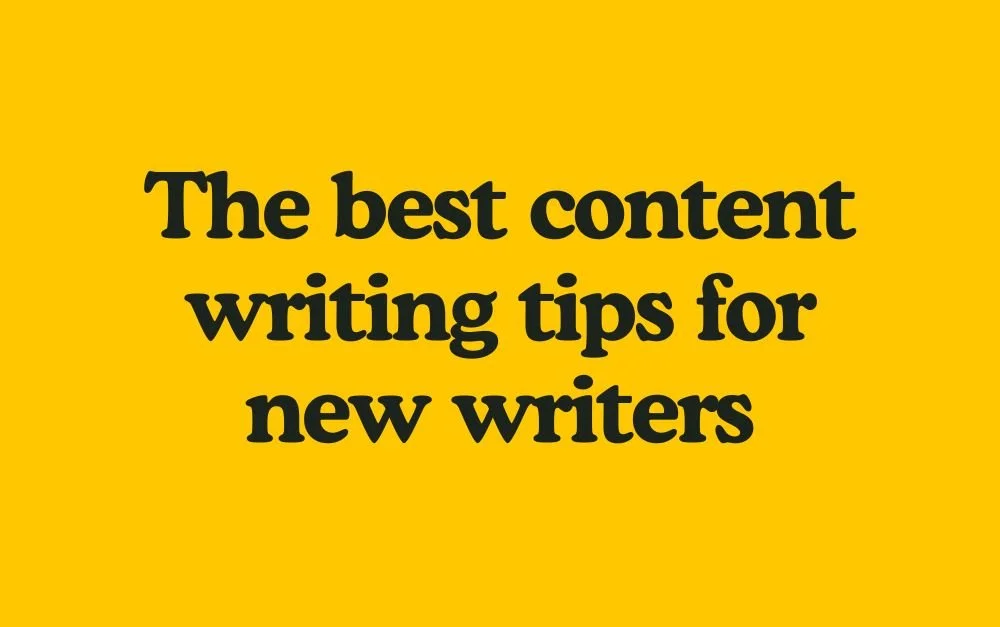How to make your writing ‘easier to read than to skip’
In this blog:
In 1962, after working 44 years in the copy department, author Victor O. Schwab wrote the book ‘How to Write a Good Advertisement’.
Until today, this book remains one of the most popular and practical books on marketing and advertising.
It points out techniques for catching people’s attention and selling them anything, with ease. And although there’s a difference between being a writer and a copywriter, the point of both is the same: To draw attention to something.
As Victor Schwab wrote:
“An advertisement cannot stimulate sales if it is not read; it cannot be read if it is not seen; and it will not be seen unless it can get attention.”
Replace the word ‘advertisement’ with ‘writing’, and you’ll realise why copywriting skills are essential for every content creator. As a writer, your writing is your product. If you don’t make it attractive, people don’t click — and you don’t get paid.
I took the five best lessons from the book to help you write better, more engaging stories.
How to choose eye-catching images
Our brains process visuals 60,000 times faster than the text, so selecting the right image plays a significant role. Piquing the readers’ curiosity with the picture can encourage them to read your story.
🔎 Related: The best way to tell a story
Photos of beaches, forests, or sunsets are tempting to use because everybody dreams of these scenes, but these images are so heavily overused nowadays — thus easily overlooked by the reader. To draw attention, your images should be (a bit) out of the ordinary.
Victor Schwab explains:
“Now, to get attention, don’t try to do it through perfect symmetry and balance. To get and to hold attention, aim for two qualities. First, it should be interesting to look at. Second, it should not be static, but should convey the feeling of movement and action, for these are interesting.”
Asymmetric shapes get more recognition because they disrupt our brain. When you stare at the picture and spot something weird, your brain stops for a bit to observe what’s going on.
Asymmetric shapes and images make our brains alert because they present unusual patterns. (Image credit: Archives of Pearson Scott Foresman, donated to the Wikimedia Foundation)
The symmetric shape on the left is something we already know, so it doesn’t seem exciting. The asymmetric shape on the right seems unusual and so your brain becomes alert to it.
Asymmetry isn’t the only thing you can use — ordinary objects or scenes in unexpected colours or sizes can work well too.
You could also try choosing more dynamic pictures instead of ‘static’ ones. Images showing action and movement evoke emotions and grab our attention faster.
How to write impressive headlines
About 8 out of 10 people read the headline, but only two will click through and read the rest. Thus, the vast majority of your story’s success is determined by its headline.
In the author’s words:
“It is the headline that gets people into the copy; the copy doesn’t get them into the headline.”
A good headline always promises a reward that the story delivers. If people aren’t sure they’ll get something from the content, they won’t read it.
You can hook a reader with the headline in two ways: using a positive or negative approach.
🔎 Related: Five words writers need to stop using in headlines
Rewards through a positive approach
A positive message in your headline should imply what people can gain. Any advice or lesson that helps people fulfil their mental, physical, financial, social, or emotional objectives works efficiently.
In general, people want to accomplish, save, or improve on the following:
better health
more money and time
more popularity, improved appearance, and pride of accomplishment
self-confidence and personal prestige
better career and profitable business
longer and meaningful lives
happier relationships
sense of well-being and security
Rewards through a negative approach
Confronting the reader in a negative way is sometimes more powerful than giving hope through positivity. Headlines with a negative approach tell people how to avoid any undesirable conditions.
People always want to escape:
embarrassment
mistakes
worries
poverty
accident and illness
discomfort
boredom
loss of business, career, and social prestige
It’s good to test both attitudes in your headlines to see which one works the best with your audience.
How to use the attraction of specificity
A positive or negative message in the headline isn’t enough to draw attention. Specificity is another concept that plays a vital role. Art and originality won’t get you anywhere unless the reader can’t take a clear idea of the story behind your headline.
A perfect title doesn’t have to be unique — it has to be clear.
To be specific and pique curiosity, use numbers in your headlines. The human brain loves them because they represent clarity. The title “How to conduct a great case study” isn’t as appealing as “7 tips to conduct a great case study”, because the second headline gives a better idea of the article’s content.
How to use numbers in your headlines
Even numbers appeal more to a feminine audience
Odd numbers appeal more to a masculine audience
Number 10 delivers a message of security and certainty
Numbers between 1 and 20 are appealing to the largest audience because they’re familiar
Examples
“Lose weight in 7 days” is more specific than “Lose weight in a week”
“You have last 30 days to lose weight before summer kicks in” is more urgent than “You have last month to lose weight before summer kicks in”
“How I earned $1,220.35 in a day” is more natural and precise than “How I earned more than a thousand dollars in a day”
Why the primary viewpoint must be the ‘point of you’
English philosopher Thomas Hobbes suggested that “self-interest is the most fundamental human motivation.” It’s not necessarily a sign of ego-centrism, though. Research showed that our brain automatically prioritises every stimulus associated with us.
You hear your name in a crowded room easier than someone else’s, and in pictures with multiple people, you’ll search for your face first.
What does this imply?
That your headlines should always focus on readers, not you.
Even with ‘personal’ essays', people don’t care as much about you as they care about the lesson or emotion they get from your story.
How to hold people’s interest for longer
I picked a few tips from the book that relate to any writing, not just advertisement copy:
Begin your story strongly. The initial sentence of the first paragraph needs to apply directly to your headline.
Make people think “yes, that’s just like me” within the first paragraphs, so they continue to read the rest of the article.
If it’s possible and relevant, ask questions throughout the story to make the reader involved.
Always be specific and do your best to paint a clear picture in readers’ minds. Active verbs and pictorial nouns can help you do this.
Avoid overuse of adjectives and adverbs. Too many adverbs in your story suggest that you’re using weak verbs. Instead of “he walked slowly”, use “he strolled”, and so on.
🔎 Related: The best content writing tips for beginners
Conclusion
The writing tips from this article can help you accomplish three key points of great copy: urgency, specificity, and focus on the reader.
In the end, even the greatest story can’t be heard if people don’t click on it.
This quote from ‘How to Write a Good Advertisement’ highlights the importance of copywriting skills in one sentence:
“Your writing should be always easier to read than to skip.”
=====
Now you’ve read this, you might be interested in:




